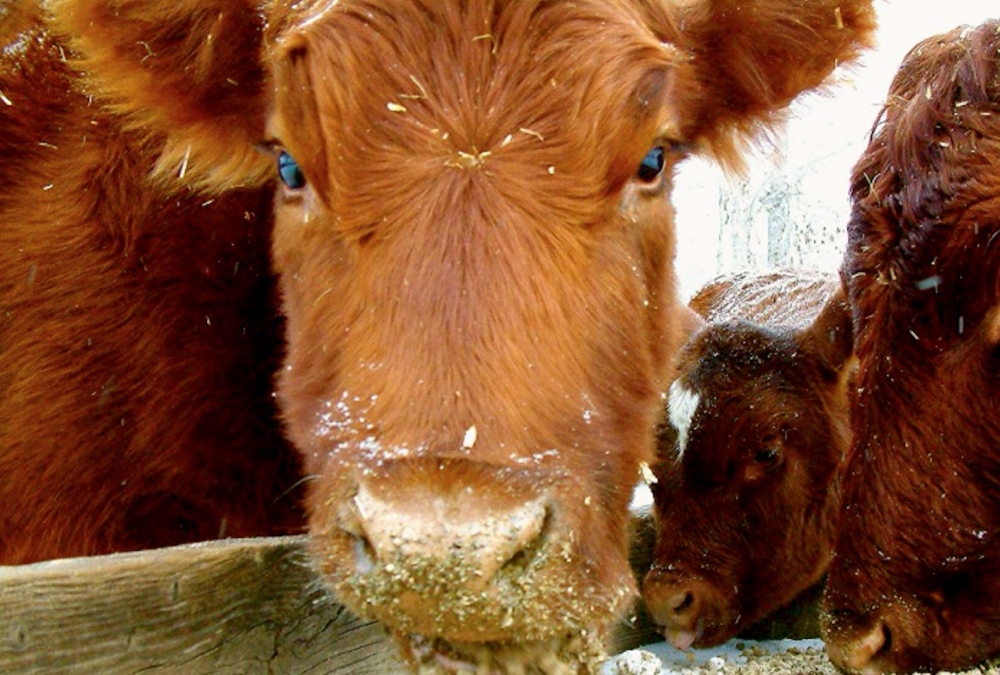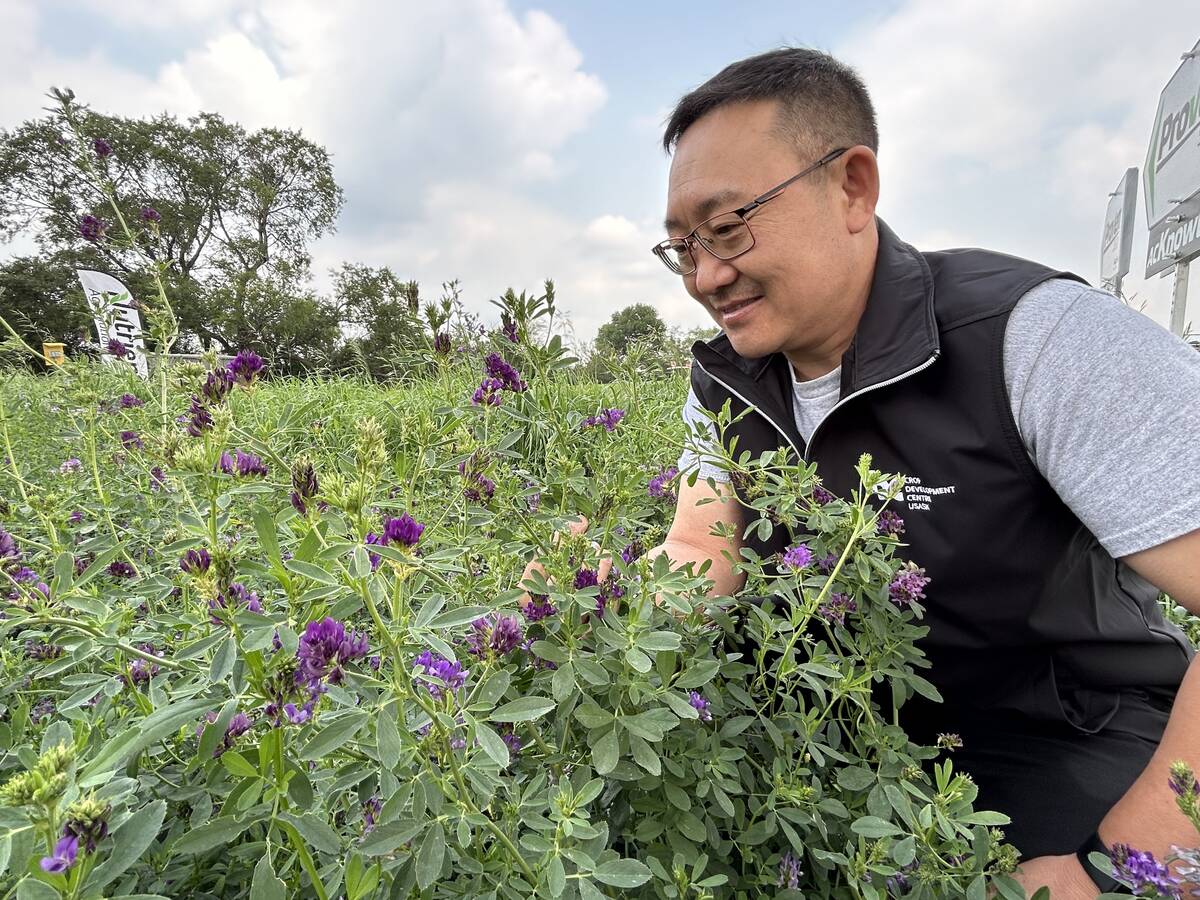Glacier FarmMedia — Purple is the standard colour for alfalfa flowers, but it isn’t the only colour. There are alfalfa varieties that produce white, blue, cream and yellow flowers.
Scientists from the University of Saskatchewan and the National Research Council are studying alfalfa with yellow flowers to see if it can provide drought tolerance in future varieties for Western Canada.
Follow all of our Ag in Motion coverage at the Western Producer.
Read Also

U.S. livestock: Live cattle correct higher
Live cattle futures on the Chicago Mercantile Exchange were stronger on Monday, taking back some of Friday’s losses amid ideas…
“(The) yellow flowering alfalfa is probably coming from northern Mongolia and some parts of Russia. It’s a very dry area,” said Bill Biligetu, a plant science professor at the University of Saskatchewan.
The forage crop breeder was at Ag In Motion 2025 July 15, one of thousands who attended the farm show northwest of Saskatoon.
Drought tolerant, high-performance alfalfa
Biligetu came to Ag In Motion to talk about his research on forages, including a project on drought tolerant alfalfa.
He’s part of a team of scientists who are evaluating a diverse germplasm of alfalfa with the broader goal of designing a new variety that can deal with drought and still produce a sufficient volume of forage. The other project leaders are Allan Feurtado of the NRC and Maryse Bourgault from the U of S’s plant sciences department.
The Beef Cattle Research Council and Results Driven Agricultural Research in Alberta are funding the project, which started last fall and continues until 2028.
“Superior alfalfa genotypes with high performance under drought will be selected for new population development,” says the project description.
“At least three new populations will be developed based on flower color, root traits and agronomic (yield).”
An alfalfa that performs during periods with low moisture is needed in parts of the Prairies. Southwestern Saskatchewan, for instance, has suffered through dry growing seasons since about 2018.
Focusing on the roots
The scientists have set up experiments in the lab and at the Livestock Forage Centre of Excellence southeast of Saskatoon to study how the roots of different types of alfalfa grow into the soil when they lack moisture.
Focusing on the roots should give them clues on how alfalfa plants respond to drought and scavenge for moisture.
It’s possible that yellow-flowering alfalfa is better equipped to find water in the soil.
“Typical Canadian varieties … have a big tap root. There is other purple flowering alfalfa that have (a combination) of branch and tap roots,” Biligetu said.
“If you look at yellow-flowering alfalfa, they have branched roots. The branches are bigger than the purple flowering alfalfa.”
This may help plants collect water from a wider zone, he added.
Improving yellow-flowering alfalfa yield
There is a yellow flowering alfalfa on the market in Western Canada called AC Yellowhead. It’s extremely winter hardy and persistent, but yield is smaller than other alfalfa varieties.
“(It’s) suited for pastures in both northern and southern areas and for hay where one harvest per year is intended,” says the Secan technical description of the variety.
Biligetu is hoping to blend the drought tolerant traits from a yellow-flowering variety with the high yield from a purple alfalfa and then create a new variety that can handle drought and produce a substantial amount of forage.
Getting to that point will take some time, partly because the scientists need to identify the genes that help alfalfa cope with drought.
“(We are) extracting DNA from all these alfalfa (types) and then we are sequencing them, so we have the genomic information,” he said, adding that drought tolerance is a complex trait.
“I don’t think we can find one or two genes. It’s more likely many genes.”















